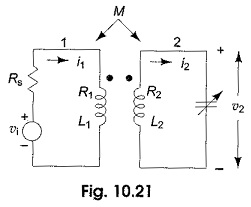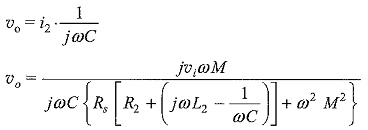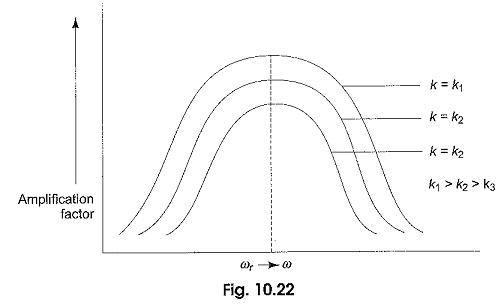Single Tuned Circuit:
Consider the Single Tuned Circuit in Fig. 10.21. A tank circuit (i.e. a parallel resonant circuit) on the secondary side is inductively coupled to coil (1) which is excited by a source, υi. Let Rs be the source resistance and R1,R2 be the resistances of coils, 1 and 2, respectively. Also let L1,L2 be the self inductances of the coils, 1 and 2, respectively.
Let
with the assumption that Rs >> R1 >> jωL1. The mesh equations for the circuit shown Rs in Fig. 10.21 are
or
The output voltage
The voltage transfer function, or voltage amplification, is given by
When the secondary side is tuned, i.e. when the value of the frequency ω is such that ωL2 = 1/ωC, or at resonance frequency ωr, the amplification is given by
the current i2 at resonance
Thus, it can be observed that the output voltage, current and amplification depends on the mutual inductance M at resonance frequency, when M = K√L1L2. The maximum output voltage or the maximum amplification depends on M. To get the condition for maximum output voltage, make dυo/dM = 0.
From which,
or
From the above value of M, we can calculate the maximum output voltage. Thus
or the maximum amplification is given by
The variation of the amplification factor or output voltage with the coefficient of coupling of Single Tuned Circuit is shown in Fig. 10.22.












